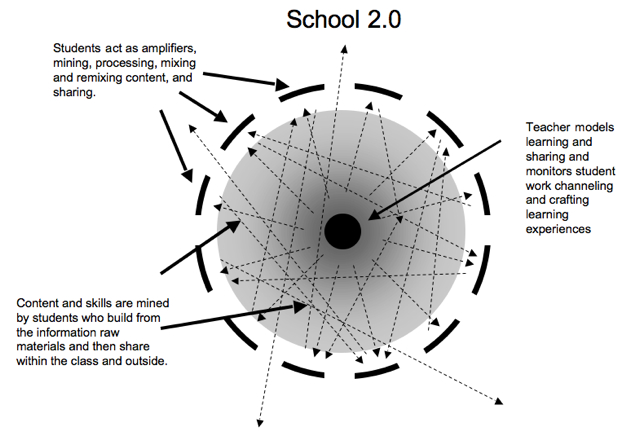
Well... Before I was involved in EdTech full-time I was a Social Science teacher, teaching AP American Government. I knew the U.S. Constitution and could quote specific passages verbatim. I would teach students that the Bill of Rights were not 'absolute' that there were limits to the 'freedoms' listed there. I would teach students about how the Supreme Court, using the rule of precedent, would give more definition to the Bill of Rights and clearly define limits to things like the Free Speech and Press provisions of the First Amendment.
I have gone on record publicly a few occasions supporting the First Amendment rights of my students in school. I feel that instead of 'blocking' certain sites on the Internet, we need to do a better job of educating the students we have to be better 'consumers of the media.' Excessive filtering of Internet traffic is akin to 'cyber book burning.' This is the idea behind the 'Global Communications' Course. My professional thrust the past 18 months has been in this vein. The idea I have promoted of being a 'Guerrilla Learner' is wrapped in the philosophy of having a small group of individuals who band together to promote an open ideology.
The events in the blogosphere over the past few days have me worried. Kathy Sierra, a well known blogger, has been receiving death threats as comments on her blog, 'Creating Passionate Users.' These threats got to the point where they couldn't be dismissed as a random 'crack pot' trying to draw attention to themselves. These threats went so far as to list Kathy's home address and Social Security Number. There were even 'Photoshopped' images of Kathy with a hangman's noose next to her head and one where a woman's thong was used like a gag. (I intentionally did not post these images because they are in VERY POOR TASTE!) Kathy has cancelled personal appearances due to these threats.
So, what are we to do? For the most part you have to ignore as much of this type of behavior as you can. As teachers, you learn very quickly to have a thick skin, or you don't last very long in the classroom. Unless there is a direct personal threat to your well being, there isn't much you can do. I have had teachers forward me anonymous 'hate' e-mails and asking me to trace them back to the source. I can typically trace them back to the ISP, but unless you have a court order, that is as far as you can go. ISP's will not trace anything back to the user unless there is a court order authorizing them to do so. In education, this type of behavior would most likely come from a student who feels they have been wronged by a teacher. This is even more of a case to promote Information Literacy and Digital Citizenship in the curriculum.
I hope these types of events do not push some of the truly brilliant people on the Internet, like Kathy Sierra, into an underground status, where they have to fear for their lives because they have an opinion that is contrary to someone else. Danah Boyd, a well-known Information Literacy blogger from UC Berkeley also blogged on this. As citizens of the Internet, we all have a responsibility to model appropriate behavior and not be a 'silent witness' to abuses we come across on our journeys through cyberspace.








